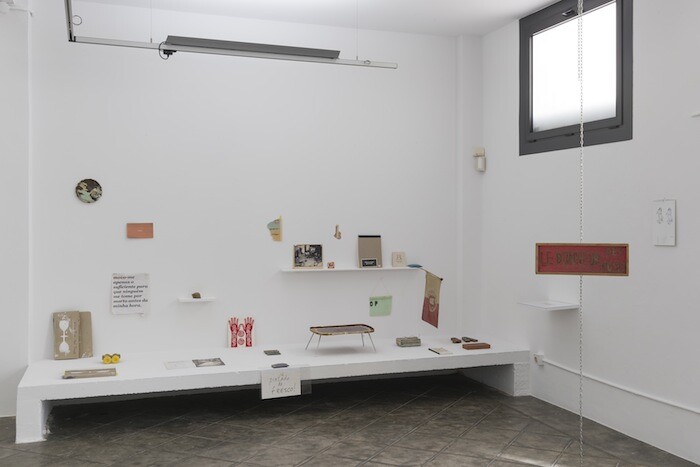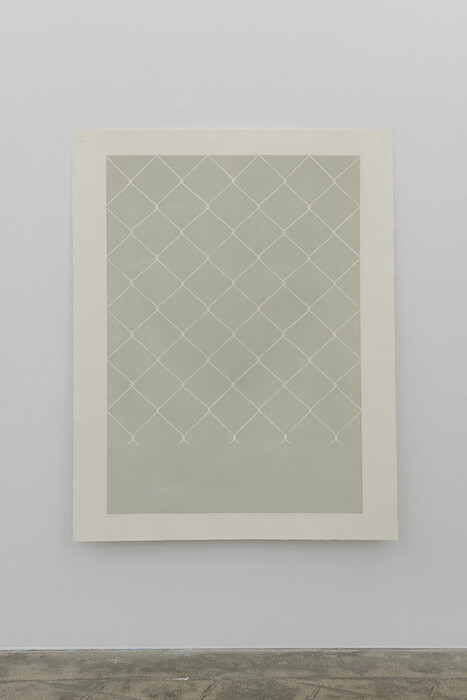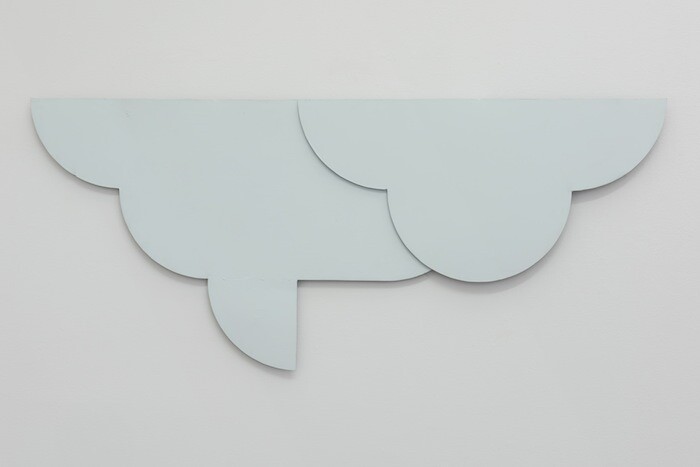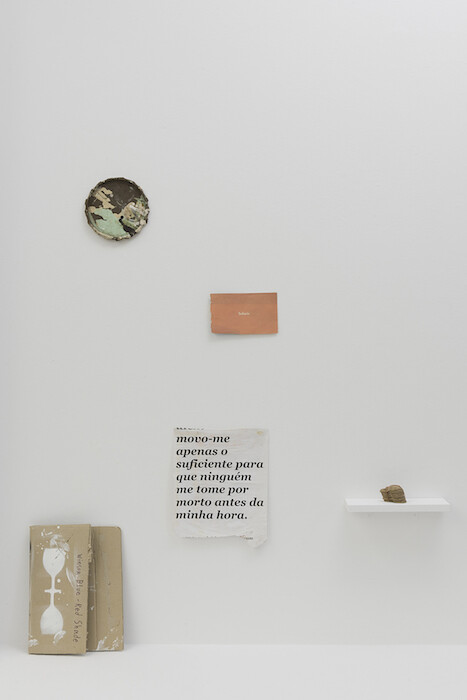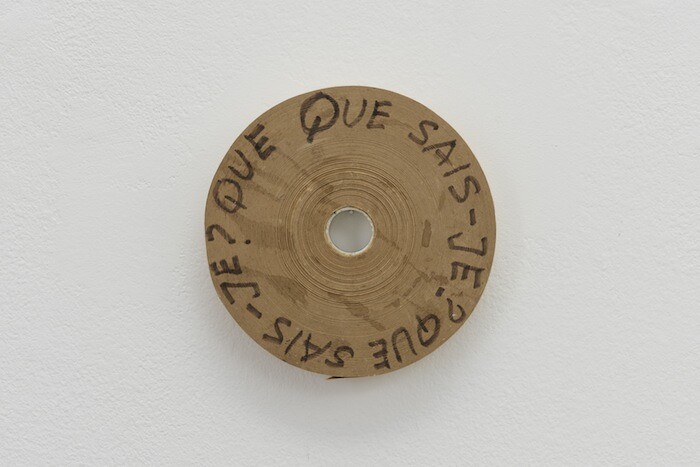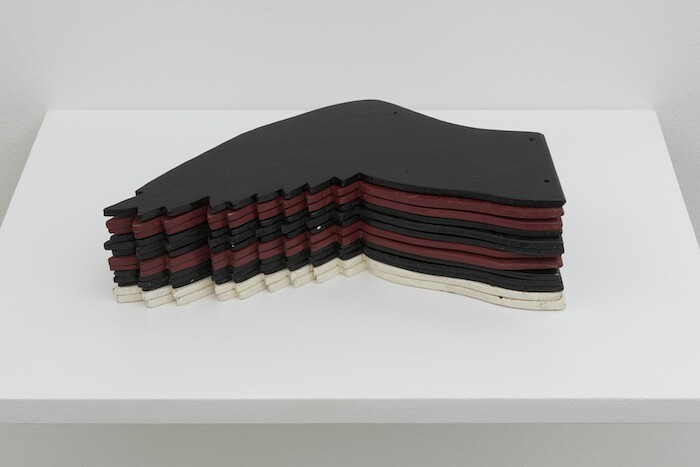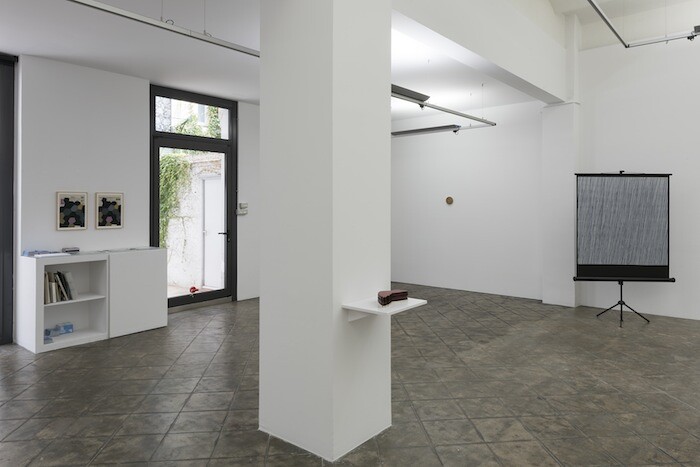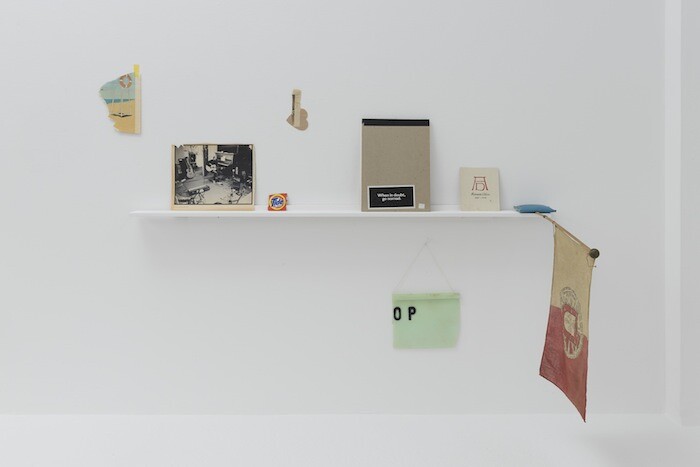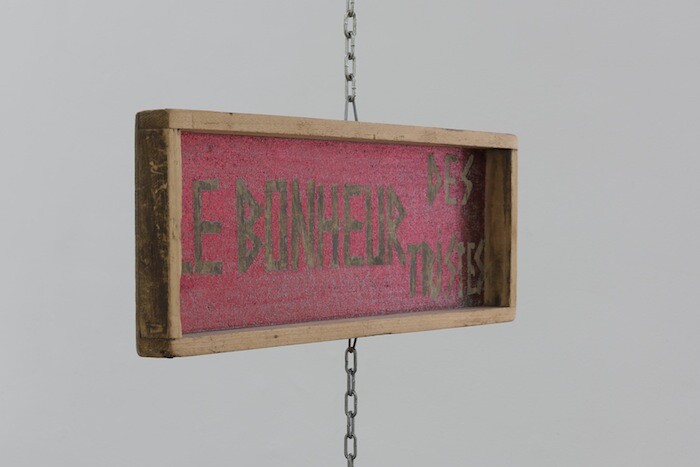While it has been widely exhibited in her native Portugal, Ana Jotta’s work hasn’t been presented in depth to the Barcelona public since the early 1990s.1 So this mini-survey of her production from 1980 to the present, framed as part of the Barcelona Gallery Weekend, is overdue. “Abans que me n’oblidi (Before I forget)” begins (or ends) at the intermediary patio space that one crosses before entering the main exhibition space at ProjecteSD. Part of a curved wall is covered with irregular patches of light gray and pale pink paint, as if emulating swatch tests for a redecoration. This playful gesture sets the tone for the exhibition inside, a somber and subtle palette of delicate intonations and provisional arrangements.
A dozen pieces are sparingly hung around the perimeter of the exhibition space. A large aquatint depicts a delicate wire fence (Untitled, 2002) and a portable projection screen is covered with a torrent of black-and-white strokes (Un Printemps 2008, 2008). This is the only work in the exhibition that appears to confirm Jotta’s own reductive description of herself as a painter, despite having tackled all manner of craft, from embroidery to writing. The sleek finish of the blue steel wall piece Cloud (2013) contrasts with the patina of the first work one encounters—an old roll of brown paper tape on which the words of its title Que Sais-Je? [What do I know?] (2011) are written. What might read as a disarming lack of confidence on the part of artist—supposing she wrote this statement—also recalls the classic Socratic paradox (knowing that one knows nothing), as Jotta divests herself of any privileged insight into her own work. Her long-term habit of collecting found objects lies at the core of her practice, and her refutation of a recognizable style has generated much speculation about her artistic intentions. Jotta’s métier is simply doing, working to, as Ricardo Nicolau put it, “dilute” herself as an author.2
Her ongoing series “Notas de rodapé” [Footnotes] provides a key to understanding the semantic complexity of her work. It comprises a selection of the eclectic bits and pieces which Jotta has gathered for decades and that coexist in her studio alongside works that she has fabricated. Displayed in the style of a chic flea market on the gallery’s white built-in bench, there are, for instance, a bundle of Emilio Salgari’s adventure books; a small faded Portuguese flag; a worn bar of soap fitted with yellow rollerskate wheels; torn pages from vintage magazines; wooden “J” and “A” letters; and an inlaid breakfast-in-bed tray decorated with an ornamental border on which the artist has written “FIN,” as if it were a silent movie intertitle. Their denomination as “footnotes” is a curious choice—a footnote would normally expand or elucidate from the margins, yet here they occupy a central place in her oeuvre, lying outside any hierarchical relationship between art and non-art, humbly making their way back to her studio and recuperating their initial status as mere things once a show is over. Her insistence on maintaining an on-off relaftionship with this repertoire of objects is one of the most lucid links with Jotta’s background as an actress and stage designer in Lisbon in the late 1970s. Actors and props play many parts; they have their exits and their entrances, taking on a new presence with each appearance on the stage.
A few days after the opening of the Barcelona show, I encounter some of Jotta’s footnote objects in the form of a wallpaper, inside an architectural loop by Andreas Angelidakis (Collider, 2016), part of this year’s Liverpool Biennial. In typical Jotta fashion, and despite her efforts to avoid a signature style for over three decades, there is the identifiable intention to generate resourceful loops and economize means of presentation: the wallpaper images are taken from the pages of her 2014 “Footnotes” publication, the same that is displayed in Barcelona among the cluster of Footnotes #4 (2016), which also includes the cardboard fragment that became its cover, propagating a correlation between the object, its form, and its reproduction.
Jotta’s firm hand in the selection of her work for exhibition poses a challenge. How can her strong curatorial sense be reconciled with her constant undermining of any idea of her own authority? Jotta has forthright opinions on how her work is discussed. The catalog of her 2005 retrospective exhibition “Rua Ana Jotta” [Ana Jotta Street] at the Museu Serralves in Porto included letters addressed to curators, critics, and gallerists questioning their interpretative skills, as well as a self-interview.3 Perhaps a letter to this author might appear one day, so take all of the above as my humble opinion. After all, que sais-je?
Her previous solo exhibition was in 1993 at the now closed Galería Berini in Barcelona.
Ricardo Nicolau, “S/he is Her/e,” exh. cat. (Lisbon: Fidelidade / Chiado 8, 2008).
Ricardo Nicolau, “A Entrevista Perpétua: Colecção de Serralves,” in “Colecção Ana Jotta” e Convidados (Porto: Fundação de Serralves, Câmara Municipal, Porto Lazer, 2013), 13.
